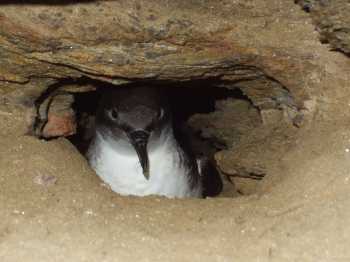Two NGOs, BirdLife International and Medmaravis, have jointly submitted an Information Paper to the Seventh Meeting (AC7) of the Agreement’s Advisory Committee, to be held next month in La Rochelle, France. The paper (AC7 Inf 04) has among its recommendations that “Mediterranean countries that are Parties to ACAP are encouraged to propose Calonectris diomedea and Puffinus yelkouan for listing in Annex 1.”
Scopoli’s Calonectris diomedea and Yelkouan Puffinus yelkouan Shearwaters are both breeding endemics to the Mediterranean. The former species migrates after breeding into the Atlantic Ocean, whereas the latter moves eastward to visit the Black Sea. The proposal follows on from conservation workshops the two NGOs held in October 2011 to develop population assessments for the two species (click here).
Shearwaters as a group are not new to the Agreement. The Critically Endangered Balearic Shearwater P. mauretanicus, also a Mediterranean breeding endemic, was listed in the Agreement in 2011 following its nomination by Spain to the Fourth Session of the Meeting of Parties (MoP4), and this year the Advisory Committee will consider a proposal from Chile to nominate its endemic Pink-footed Shearwater P. creatopus (AC7 Doc 24) All four of these shearwater species were identified by ACAP as potential candidates for listing at a previous meeting of its Advisory Committee (see AC 3 Doc 18).
As part of its deliberations AC7 is set to discuss a process to follow for evaluating and listing new species on Annex 1 (AC7 Doc 20). The proposed process if endorsed by the Meeting of Parties will essentially follow the use of the total weighted scoring system set out in AC3 Doc 18. The procedure would commence with a Party or Parties bringing a proposed nomination to an Advisory Committee and would include a draft Species Assessment following the format for those for listed species (click here). Following evaluation by the Advisory Committee’s three working groups, the committee would consider the proposal and make a recommendation to the next session of the Meeting of Parties in its report.
The final step in the procedure would be for a Party or Parties to submit a species’ nomination in the form of a draft resolution to the Meeting of Parties for its decision.

Yelkouan Shearwater in its burrow. Photograph by Jerome Lagrand
Selected References:
Cooper, J. 2010. A brief review of the conservation status of shearwaters Calonectris and Puffinus. AC5 Inf 15. 7 pp.
Cooper, J. & Baker, G.B. 2008. Identifying candidate species for inclusion within the Agreement on the Conservation of Albatrosses and Petrels. Marine Ornithology 36: 1-8.
Cooper, J. & Baker, [G.] B. 2012. The conservation status of the World’s shearwaters. In: Fifth International Albatross & Petrel Conference 12 – 17 August, 2012 Wellington, New Zealand Conference Programme and Abstracts. O54.
John Cooper, ACAP Information Officer, 29 April 2103

 English
English  Français
Français  Español
Español